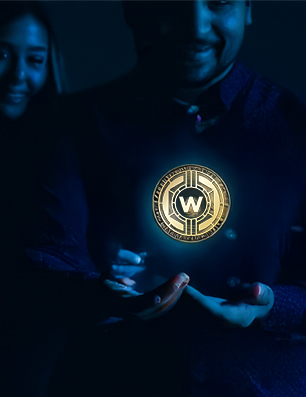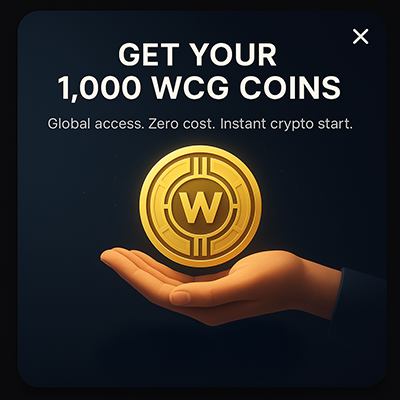- Written by: Jun
- Mon, 06 Sep 2021
- Russian Federation
Dash is a decentralized, open-source blockchain designed to provide fast and inexpensive global transactions, while maintaining anonymity. The post What is Dash? appeared first on CryptosRus.
What is Dash?
For anyone who has been around the proverbial, crypto block, the individual has most likely come across Dash at some point. But what exactly is it, and what is it used for?
What is Dash?
Dash is a decentralized, open-source blockchain designed to provide fast, inexpensive, and anonymous global transactions. While some blockchains are utilized for dApp development, and Bitcoin is used as a store of value — Dash is intended to be used primarily for payments. This peer-to-peer cryptocurrency originally forked from Bitcoin in order to provide the fast speeds that Bitcoin is unable to offer — while also remaining scalable and easy-to-use.
How does Dash work?
Dash utilizes something called the X11 hashing algorithm, which was created by Dash founder Evan Duffield. X11 works differently from other Proof-of-work (PoW) algorithms, by using algorithm chaining — this adds extra levels of complexity that significantly increase overall network security.
Within the Dash network, there are three groups of network participants: users, miners, and masternodes.
Network users are the individuals who send and receive DASH tokens in order to make transactions. The miners validate these transactions on the Dash network through X11 hashing. The third group, masternodes, simplify and speed up the validation of transactions on the network.
What are Masternodes?
Dash utilizes masternodes to secure transactions on its blockchain. Masternodes are a category of miners tasked with overseeing the network by confirming blocks, enabling governance, and facilitating transactions. Masternodes all have a stake in the Dash ecosystem, because each masternode is required to stake a minimum of 1,000 of their own DASH tokens. Masternodes are essential to Dash’s InstantSend and Coinjoin protocols.
What is InstantSend?
InstantSend is what allows Dash to achieve nearly instantaneous transactions. Within this protocol, masternodes form voting quorums that eliminate wait times normally associated with blockchain network confirmations. When an InstantSend is requested, a masternode locks the transaction down. The transaction becomes confirmed and irreversible when the masternodes determine that there are sufficient confirmations. The high speeds are absolutely essential for a cryptocurrency like Dash, which is used for payments in real-time. Imagine customers waiting several minutes at a register for a payment to confirm.
What is CoinJoin?
Dash’s CoinJoin mixing technique anonymizes transactions on Dash. This mechanism takes transactions from multiple parties and mixes them as one transaction, thus helping obscure the identity of the sender and receiver, and making privacy a reality on Dash.
How are block rewards distributed?
45% of the block reward goes to miners, 45% goes to masternodes, and the remaining 10% go back into the Dash treasury.
Who created Dash?
Originally named Darkcoin, Dash was created by Evan Duffield in 2014. Dash was eventually rebranded to its current name, which is portmanteau for “digital” and “cash” — aptly named for what it offers. When Dash was first created, Duffield envisioned it as a way to add more anonymity to Bitcoin. Duffield served as the CEO of Dash Core Group until stepping down in 2017. Ryan Taylor serves as the current CEO.
What makes Dash unique?
In regard to real-world usability, Dash has many things going for it. InstantSend gives Dash its high speeds. It also makes Dash an ideal cryptocurrency for daily transactions, since speed is absolutely essential for a cryptocurrency to work on everyday payments. Additionally, CoinJoin gives Dash users an added layer of privacy, which is everything in today’s digital economy.
Dash also incorporates ChainLocks, which greatly reduce the possibility of a 51% attack on the Dash chain. Most proof-of-work (PoW) blockchains are theoretically susceptible to 51% attacks. With ChainLocks, a vote can be verified on the approval of blocks that are added on the Dash blockchain — every 12 hours, a rotating group of masternodes confirm new blocks.
Each of Dash’s strengths will come into play in the upcoming, DashPay Wallet app, which will make fast and efficient crypto payments accessible to everyday users.
Concerns?
The privacy elements of Dash may potentially work against it in the long run. As time goes on, privacy-based coins have drawn unwanted attention from governments and central authorities. Exchanges have needed to increasingly comply with KYC regulations. While Dash isn’t technically a privacy coin, it has developed the reputation of being one over the years. While negative misconceptions, such as the idea that Dash could be used for shady purposes, have been refuted, these ideas may still linger in the minds of those who have not looked into Dash further. For instance, according to CEO Ryan Taylor, “there is little evidence that Dash is used on the dark web in any meaningful way. In fact, it’s used about one-third as often as Dogecoin.” This appears to be a situation where people’s perception of the truth may get in the way of the actual truth. Dash’s continued success may come down to how much Dash is able to refute misconceptions, and convince the greater crypto community about its place in the crypto space.
Additionally, despite the on-paper benefits of Dash and the company’s partnerships, Dash has yet to become widely adopted. It has not garnered the type of fervor and support often seen in the crypto space around other projects. Dash offers a lot to investors and consumers, and needs to find a way to stand out – not solely on a technical level, which it has – but on a marketing level to differentiate itself from other, “fast and efficient” cryptocurrencies also available in the space. This will lead to further adoption, and Dash can then rely on the network effect to carry its solid technicals to broader audiences.
There are many cryptocurrencies that offer fast speeds, but Dash has been able to create partnerships with big companies and merchants that have allowed it to already be put into use as a payment vehicle. Now it’s a matter of continuing to grow.
Where to buy DASH?
DASH can be purchased on major crypto exchanges like KuCoin, Binance, Coinbase, or Kraken — similar to how one would buy any other cryptocurrency. You can either place a market buy or a limit buy. With a limit buy, you determine the price you’re willing to pay, and your order gets filled once the token price reaches your set limit price. If you want to get your hands on the token quickly, you can place a market order, where you agree to pay the current market price and have your order filled almost instantly. If you are interested in trading DASH, you can do so by visiting KuCoin.
The post What is Dash? appeared first on CryptosRus.






